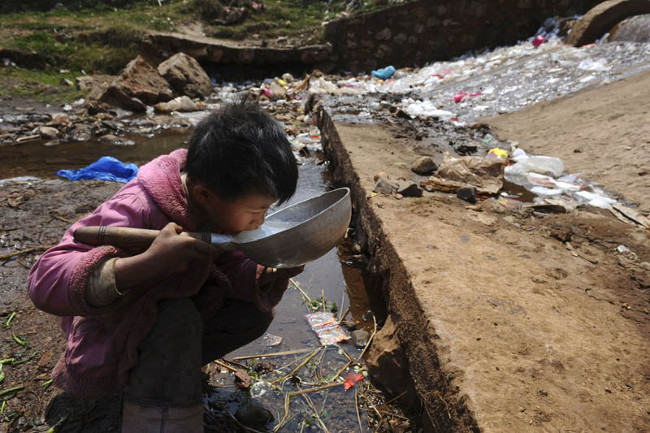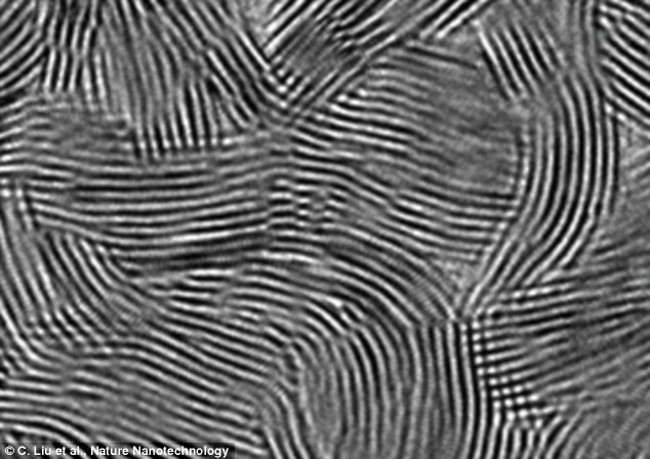The device removes 99,999% of bacteria in dirty water in just 20 minutes
Currently around 663 million people in the world do not have access to clean water. In the future, this will be the nightmare of mankind. Therefore, finding a way to filter dirty water into clean water with cheap cost is a top priority for scientists.

About 663 million people around the world do not have access to clean water
We are using solar sterilizers , based on ultraviolet light - only 4% of all solar energy. But their microbial processing speed is very slow - up to 48 hours, limiting the amount of water that can be removed.
To solve this problem, researchers at the High Energy Physics Laboratory and Stanford University in California have developed new materials that can harvest sunlight better and increase the rate of energy filtration by energy. Sun. Bring great hope of a large number of people around the world when faced with water pollution .

This device is made from Molybdenum disulfide - an inorganic compound made up of molybdenum and sulfur elements.
Dr. Chong Liu, lead author of the study, said: " Our device looks like a small, black rectangular film. We just need to put this device in the water and put it under the sun. At this time, the Sun will do all the rest. "
This device is only half as thick as a postage stamp, has a thin line of straight lines and is called " nanoflakes ".
Molybdenum disulfide is often used as an industrial lubricant , but its properties vary depending on how many layers are inside the material. In this case, each film is only a few layers thick - enough to become a catalyst - speed up the reaction when exposed to light.
In addition, the researchers added a thin layer of copper to the film - playing a role to speed up the reaction.

The results were quite satisfactory when it was possible to remove 99,999% of bacteria in the water within 20 minutes; the water collected is clean water. Part of bacteria, viruses in the water are completely removed and other toxic chemicals.
However, according to Dr. Liu, although the equipment has not removed all 100% impurities, but this result is also worth hoping for solving the water pollution problem. Thereby, many people have access to clean water.
The study was published in Nature Nanotechnology.
You should read it
- Water glasses that you drink every day can contain many harmful substances such as chlorine, pesticides, arsenic ...
- The new device can capture water from the arid desert atmosphere
- Create sponge that can boil water
- New technology removes salt from water with the lowest energy consumption
- If you lack human water, how long will you live?
- Instructions for using water swab machine
- Is the water you use everyday really clean?
- Is solar water heater heating water good?
May be interested
- What is the difference between the brain of men and women?
 the human brain is one of the most mysterious objects in the universe but is it that the brains of men and women are different?
the human brain is one of the most mysterious objects in the universe but is it that the brains of men and women are different? - Stun with the speed of changing the rails of a 177m long 'super train'
 ru 800 s is 177m long, when loaded with ballast and beams, this machine will weigh about 650 tons. this is one of the largest machines in the world.
ru 800 s is 177m long, when loaded with ballast and beams, this machine will weigh about 650 tons. this is one of the largest machines in the world. - Mysterious tribe of the world's smallest tribe specialized in catching crocodiles and hippos
 with a population of less than 500 people, el molo is one of the world's smallest tribes. this tribe survived by hunting. the special thing is that they only hunt and eat meat 2 extremely dangerous animals: nile crocodile and hippopotamus.
with a population of less than 500 people, el molo is one of the world's smallest tribes. this tribe survived by hunting. the special thing is that they only hunt and eat meat 2 extremely dangerous animals: nile crocodile and hippopotamus. - Emotional map of the body: The relationship between emotions, physiological state and behavior
 why when you are praised, you flatter your nose again; when you're embarrassed, are your cheeks flushed or when you're happy, you seem to want to jump up and hug someone? all of these reflect the intimate relationship between emotions, physiological state and behavior.
why when you are praised, you flatter your nose again; when you're embarrassed, are your cheeks flushed or when you're happy, you seem to want to jump up and hug someone? all of these reflect the intimate relationship between emotions, physiological state and behavior. - Science of happiness: Happiness doesn't just come naturally like you think
 how can we live happily even when things are not right?
how can we live happily even when things are not right? - 7 famous women history set an impressive record
 the first woman to fly alone across the atlantic, the first woman to fly into space, ... is an extremely impressive record of famous women in world history.
the first woman to fly alone across the atlantic, the first woman to fly into space, ... is an extremely impressive record of famous women in world history.






 90% of bottled water is infected globally
90% of bottled water is infected globally Get fever with new technology to identify E-coli bacteria
Get fever with new technology to identify E-coli bacteria After coughing and sneezing, bacteria can survive in the air for up to 45 minutes
After coughing and sneezing, bacteria can survive in the air for up to 45 minutes See how dirty your phone is and how to clean it properly
See how dirty your phone is and how to clean it properly 10 dirty objects are tens of times more than the toilet that people often use everyday
10 dirty objects are tens of times more than the toilet that people often use everyday